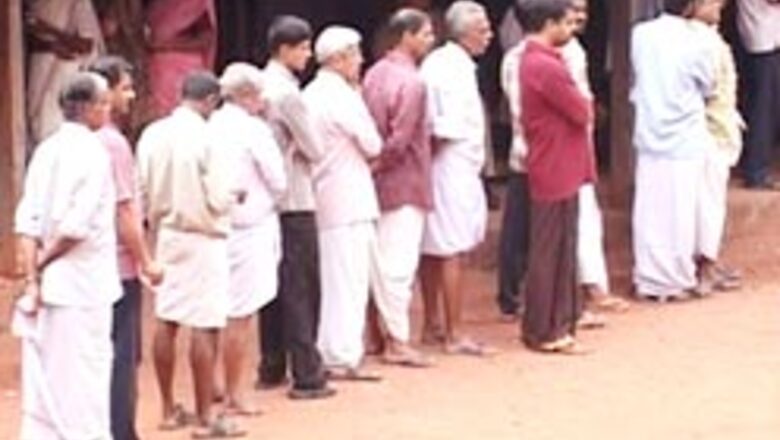
views
A serious analysis of the BJP's debacle in UP must begin by noting what went right, or seemed to go right, with the party in this election.
Compared to the assembly election of 2002 the party was less dis Kalyan united. Singh had merged his party back into the BJP and he was projected as the future chief minister.
The rebellion in Gorakhpur was finally con tained. The candidate se lection was not worse than last time. By all accounts, the campaign was not run in an inefficient manner. The RSS cadres did work for the BJP this time, more than they have recently.
To top it all, the party had struck a really smart al liance with the Apna Dal, in lieu of the unworkable alliance with Ajit Singh's RLD. Take the BJP's 20.1 per cent in the last assembly elections and add to it the 3.4 per cent of Kalyan Singh's RKP and the 2.2 per cent of the Apna Dal and you get a solid starting point of 25.7 per cent.
You begin to understand why the BJP leaders appeared smug in the wake of electoral victories in Punjab and Uttarakhand and after the morale boosting performance of the party in the municipal elections. If the BJP was to rejuvenate itself in Uttar Pradesh, this election was going to be its chance.
Upper state
1989 Lok Sabha
-
Now place the facts of the BJP's performance against this background. In terms of seats and vote share, this was the worst performance of the BJP since the beginning of the Ramjanmabhoomi movement, the first time it fell below the 20 per cent threshold.
Effectively, it was a loss of 3.2 percentage points compared to an indifferent performance in 2002. The losses were not concentrated in some regions or pockets: the party lost substantial votes and seats all over the state - more in West, Bundelkhand and Avadh. In the urban seats too the swing was negative, though much smaller than the rest.
That is why it is time to ask a big question that the BJP must confront sooner or later in the context of UP: is the verdict just an electoral setback that big players must get used to in the electoral cycles in our country? Or is this something more enduring? To put it bluntly: is the BJP facing the possibility of a terminal decline in UP?
It is a question worth asking, for parties run the risk of slipping into terminal decline when they miss their ‘turn' in the incumbency cycle, when they perform badly in an election that was supposed to herald their revival and when the electoral ground begins to change. This is exactly what has happened to the BJP.
This election provides evidence that the BJP may be losing two key elements responsible for its rise to power. The Ramjanmab hoomi movement provided the BJP with an issue that created fresh political polarisation and yielded new following. That issue is no longer salient in UP.
PAGE_BREAK
When asked to pick one issue that mattered most to them while voting, only 1.1 per cent mentioned the Ramjanmabhoomi dispute.
Clearly, pushing this issue that has no pur chase further could only be suicidal for the party. As expected, the BJP was the party most preferred by those who mentioned this issue, but it did not fig ure anywhere close to the top for those who mentioned any other issue like price rise, unemployment, development, agrarian crisis, corruption and law and order. The party's own issue has no salience; the party figures nowhere in issues that have salience.
The other element to the BJP's success was its social coalition of the upper caste and non-yadav OBCs. This social base too has fractured, not so much because of the loss of brahmin vote but because of the substantial erosion of the OBC vote.
The BJP's upper caste vote brahmin as well as non-brahmin has declined from its peak of about 75 per cent to just about 45 per cent, as it has rapidly lost the support of the poor among the upper caste.
The absence of a brahmin leader does not seem to have made much difference, for Kalyan Singh's popu larity did not vary much across the brahmin-rajput divide.
Nor has the presence of an OBC leader made a difference to the steady erosion of the OBC vote from about 45 to merely 22 or so, except among lodhs where the BJP did increase its support. In that sense, Kalyan Singh proved to be neither an electoral as set nor a liability.
Thus the BJP faces a challenge of the kind the Congress has faced in UP in the 1990s: its issue has lost salience, its leaders have lost credi bility and its challengers are walking away with different slices of its Hindu rainbow. Such challenges are not impossible to respond to, but they cannot be fixed by routine polit ical management.
















Comments
0 comment